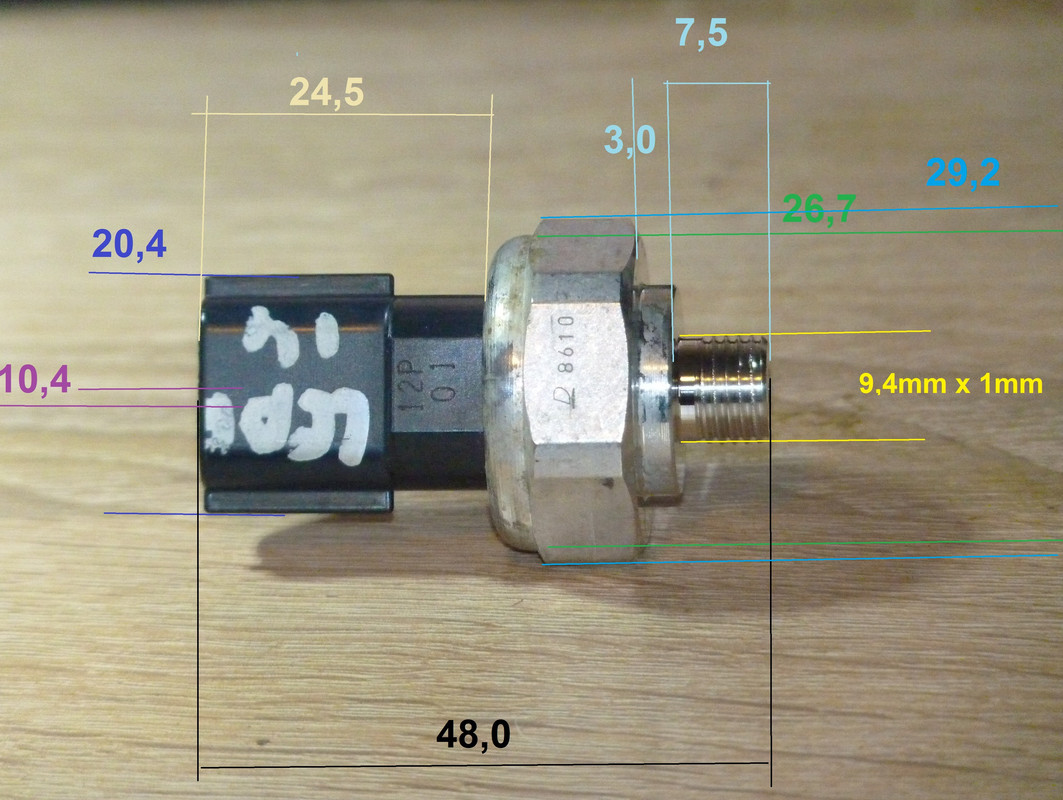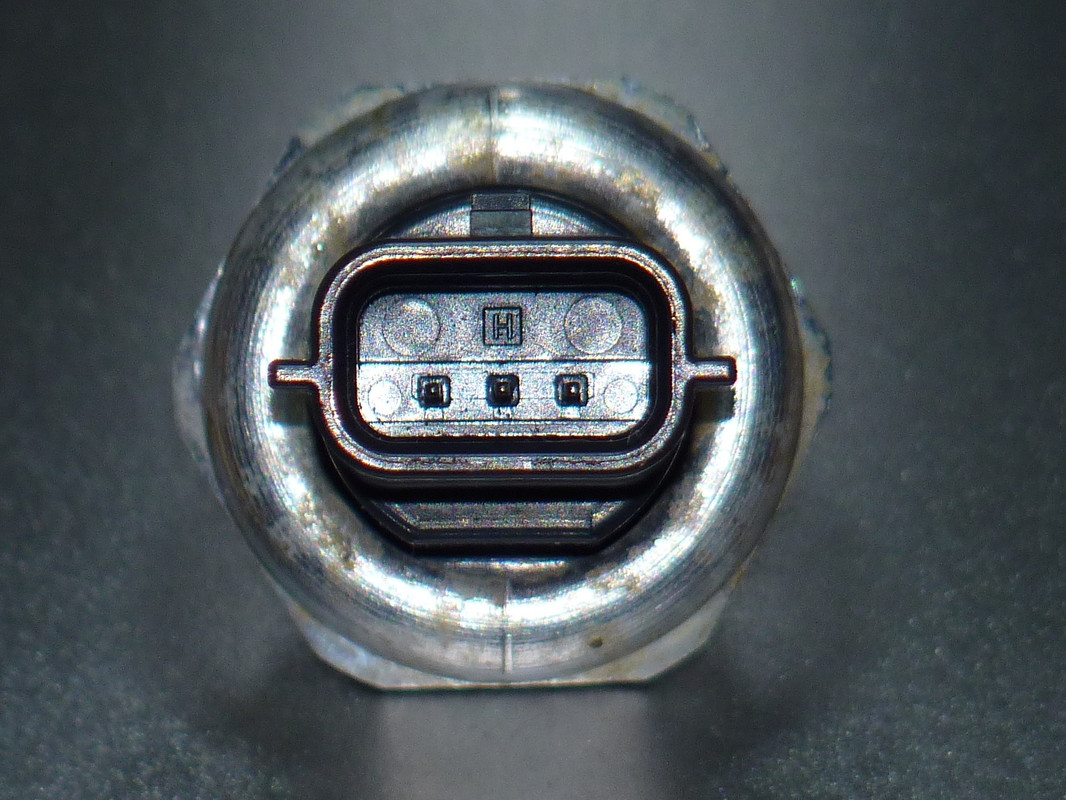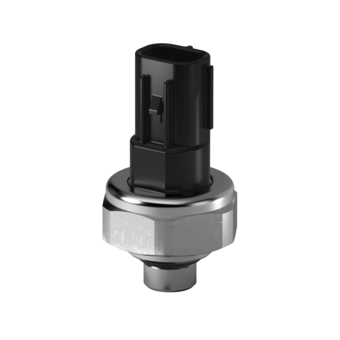arnis
Well-known member
There is a AC pressure sensor on gen1 Leafs that have heat pump.
This sensor has a different plug compared to those that don't have heat pump capability.
This sensor is sold as a assembly with AC-pipe. No Nissan part number.
All numbers are metric. Thread is also metric (M10x1 AFAIK).
I believe the "D" is the manufacturer's logo and 8610 could be manufacturer's internal part number,
or just detail nr (similar to 12P01).
Other side has plastic formula PPS-GF30. Nothing else has been observed, even with microscope.
Who is manufacturer and on what other vehicles/devices is that sensor used?
This is extremely important for me as the sensor failed :lol:
3-pin, ground-signal-5V. Signal got stuck at 4,9V no matter the pressure. Weight: 23.8grams


This sensor has a different plug compared to those that don't have heat pump capability.
This sensor is sold as a assembly with AC-pipe. No Nissan part number.
All numbers are metric. Thread is also metric (M10x1 AFAIK).
I believe the "D" is the manufacturer's logo and 8610 could be manufacturer's internal part number,
or just detail nr (similar to 12P01).
Other side has plastic formula PPS-GF30. Nothing else has been observed, even with microscope.
Who is manufacturer and on what other vehicles/devices is that sensor used?
This is extremely important for me as the sensor failed :lol:
3-pin, ground-signal-5V. Signal got stuck at 4,9V no matter the pressure. Weight: 23.8grams






